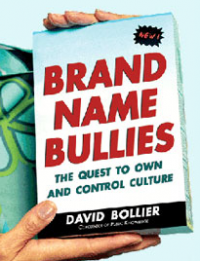It looks like a simple case of IP envy. The fashion industry wants the same sort of intellectual property rights that the big, bad movie and music industries enjoy, and they want it now. Word comes from attorney Henry Lanman, writing in Slate, that the Council of Fashion Designers of America is meeting with members of Congress today (March 14) to seek support for legislation that would give apparel designers copyright-like protections. The high-fashion leaders are apparently tired of other designers selling cheaper imitations of red carpet gowns and another designer’s “look.”
Before Congress gets carried away with dispensing a whole new set of property rights, here’s what I want to know: When will Burberry begin paying royalties to the British army for ripping off its WWI trenchcoat designs? When will Donna Karan repatriate a slice of her profits to the Greeks for copying flowing “goddess” tunics that clearly originated in Greece? Personally, I think J.C. Penney owes the estate of Kurt Cobain for his role in elevating flannel shirts into the highly marketable Grunge look. And what about the palpable debt that Tom Ford owes to Halston, that Adolfo owes to Coco Chanel, and that Alexander McQueen owes to Vivienne Westwood?
Clothes have not enjoyed copyright protection, historically, because they are considered “useful articles.” But they can be protected under trademark law. This allows designers to own their name and logo — to distinguish the brand from others — but the creative design itself can’t be owned. The happy result is a furious cycle of competition and innovation. The derivative designs that appear on the lower end of the fashion market serve, paradoxically enough, to validate the status of high-end “originals” — and to spur the trend-setters to move on to new styles entirely. For its part, high fashion feels no shame at ripping off “the street” for the latest cool look among the hip-hop crowd and other taste-makers. No one gets a dime.
According to Lanman, the legislation being pushed by the Council of Fashion Designers of America would “prevent anyone from copying an original clothing design in the United States and give designers the exclusive right to make, import, distribute, and sell clothes based on their designs.” Ah, but how will a court determine what is “original” and what is illicitly “derivative”?
As Lanman writes, the CFDA statute would exonerate an imitator if it “‘is original and not substantially similar in appearance to a protected design.” But this resolves nothing, and is akin to asking, “How many angels can dance on the head of Isaac Mizrahi’s pushpin? More to the point, how many lawyers are willing to argue over how many angels can dance on the head of that pin? Which is to say, while courts are quite used to applying standards such as these, their application is rarely straightforward, uncontested, or cheap.”
Salvador Dali got it right: “Those who do not imitate do not create anything new.” Fashion journalist Cathy Horyn once wrote, “Fashion is in some ways like a worm going from one apple into the next….” At a time when property rights and markets are seen as a panacea for virtually every problem, Congress might not be able to resist the entreaties of the CFDA. Which could be very bad news indeed for the fashion industry and creativity more generally.
For those wishing to wade into this issue more, see a fascinating law review article by Kal Raustila and Chris Sprigman, “ The Piracy Paradox: Innovation and Intellectual Property in Fashion Design.” Also, a report and DVD from last year’s conference at the Norman Lear Center, Ready to Share: Fashion and the Ownership of Creativity, will be out soon.











Recent comments